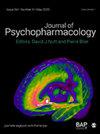Mining and analysis of security alert signals of valbenazine based on the Food and Drug Administration Adverse Event Reporting System database
IF 4.5
3区 医学
Q1 CLINICAL NEUROLOGY
引用次数: 0
Abstract
Background:Valbenazine is used for tardive movement disorders in adults. Current studies on its safety are mostly from clinical trials and small case reports, limiting information on rare adverse reactions. This study investigated valbenazine-related adverse event (AE) risk signals using the U.S. Food and Drug Administration Adverse Event Reporting System (FAERS) database.Methods:Valbenazine AEs data were collected from the FAERS database from 2017 Q2 to 2023 Q1, employing methods like reporting odds ratio (ROR), proportional reporting ratio (PRR), Bayesian confidence propagation neural network, and empirical Bayesian geometric mean.Results:After data cleaning and drug screening, there were 20,837 AEs primarily suspecting valbenazine, involving 26 system organ classes and 125 AEs related to valbenazine at the preferred terms level. AEs related to valbenazine were mainly concentrated in nervous system disorders, general disorders and administration site conditions, and psychiatric disorders. Eye disorders and gastrointestinal disorders are new AEs not labeled in the valbenazine instructions. In addition, some new potential AE signals were found, such as Tardive dyskinesia and eyelid function disorder.Conclusion:The common AEs of valbenazine in the real world are consistent with the instructions, but there are some newly discovered suspicious AEs.基于食品药品管理局不良事件报告系统数据库的戊苯那嗪安全警报信号挖掘与分析
背景:戊巴嗪用于治疗成人迟发性运动障碍。目前有关其安全性的研究大多来自临床试验和小型病例报告,因此限制了有关罕见不良反应的信息。本研究利用美国食品和药物管理局不良事件报告系统(FAERS)数据库调查了与戊苯那嗪相关的不良事件(AE)风险信号。方法:从FAERS数据库中收集2017年第二季度至2023年第一季度的戊苯那嗪AE数据,采用报告几率比(ROR)、比例报告比(PRR)、贝叶斯置信传播神经网络和经验贝叶斯几何平均等方法。结果:经过数据清理和药物筛选,共有 20837 例主要怀疑为戊苯那嗪的 AE,涉及 26 个系统器官类别,在首选术语水平上有 125 例与戊苯那嗪相关的 AE。与缬苯嗪相关的不良反应主要集中在神经系统疾病、全身疾病和用药部位疾病以及精神疾病。眼部疾病和胃肠道疾病是缬苯嗪说明书中未标注的新的 AE。此外,还发现了一些新的潜在 AE 信号,如迟发性运动障碍和眼睑功能障碍。
本文章由计算机程序翻译,如有差异,请以英文原文为准。
求助全文
约1分钟内获得全文
求助全文
来源期刊

Journal of Psychopharmacology
医学-精神病学
CiteScore
8.60
自引率
4.90%
发文量
126
审稿时长
3-8 weeks
期刊介绍:
The Journal of Psychopharmacology is a fully peer-reviewed, international journal that publishes original research and review articles on preclinical and clinical aspects of psychopharmacology. The journal provides an essential forum for researchers and practicing clinicians on the effects of drugs on animal and human behavior, and the mechanisms underlying these effects. The Journal of Psychopharmacology is truly international in scope and readership.
 求助内容:
求助内容: 应助结果提醒方式:
应助结果提醒方式:


